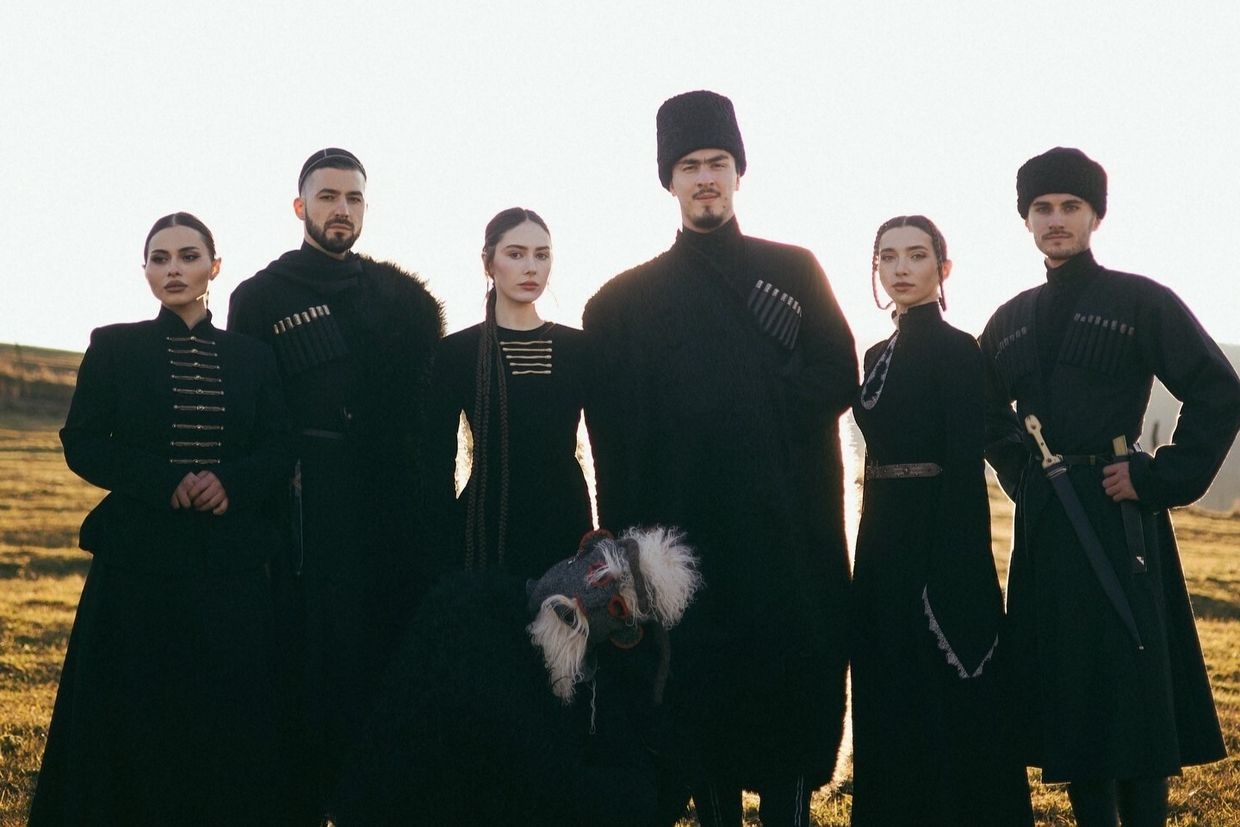
★★★★☆
Chapsh’s debut album has everything: it’s moody, energetic, and authentic, deriving inspiration from ancient healing rituals.
There really has never been a better time to enjoy Circassian folk music than today. Throughout these past few years, we’ve seen a variety of young artists emerging from the North Caucasus racing to capture that long-forgotten sound and spirit of Circassian folk music, bottling it in a variety of different formats.
From Jrpjej’s raw, sonically powerful, and thematic delivery of songs about love and war, to Hagauj’s revival of pagan traditions through ambient dark folk beats — there really is something for everyone.
Enter Chapsh (the Western Circassian name for vigils or healing rituals), an ensemble hailing from Nalchik, Kabarda–Balkaria, blending elements of both approaches in their music and their live performances.

The group derived both their name and their debut album’s name, Shapshe (the Eastern Circassian word for ‘chapsh’), from the rituals.
Traditionally, Circassians would hold vigils when a person fell ill or was injured. The vigils would be attended by their friends, relatives, and neighbours, who would gather around the patient’s bed to keep their spirits high or keep them awake by chanting songs, dancing, and playing games. Circassian historian and researcher Amjad Jaimoukha wrote that the custom was a ‘relic of animist times’, when Circassians feared that evil spirits would possess the body of the patient should they fall unconscious.
During a chapsh, guests would chant to Sozeresh, the god of illness and health, calling on him to cure the patient. Shapshe appears to be dedicated to this long-forgotten tradition, with most songs on the album hearkening to Sozeresh or the vigils themselves.
This can be seen in the first track, the instrumental ‘Sozeresh’, or ‘Siy Ziuishen’ (‘My Lord’), which appears to describe the god’s abode in great detail, while also touching on his role as god of fertility.
Songs were also dedicated to specific diseases such as smallpox or cholera.
There are at least two tracks about smallpox on the album. ‘Shorech Uered’ (‘Smallpox Song’), is the longest track by far, clocking at over seven minutes. It begins with a brooding instrumental section, led by droning shichepshines and some synth in the background, eventually transitioning into the song itself, which has been described by the band as a ritual healing song.
‘Istaupsh’, which bears the traditional taboo name for smallpox, stands in stark contrast, and is notably where the album really picks up in tempo and flair, with unique beats rarely heard in Circassian music.
While the album can occasionally be moody, it’s really at its best the faster and more upbeat it is, like in ‘Siy Maze’ (‘My Moon’) with its catchy background vocals and an infectious beats, or the album’s lively closing track, the instrumental ‘Khurtsa Qafe’ (‘Khurtsa Dance’).
The group has been fairly active on social media in the months leading up to Shapshe’s release, teasing new music, and posting snippets of their performances. They present themselves well: all members of the group can be seen wearing black Caucasian coats or dresses, almost as if they’re ready to perform at a high-profile 19th century funeral.
The line-up consists of six musicians and singers filling different roles, in addition to one azheghafe — a traditional mute Circassian jester donning a goat-like mask.
In the past, an azheghafe would attend dance circles and festivities, showcasing his acrobatics and generally being a nuisance to all regardless of their social standing or rank in Circassia’s rigid feudal system.
Azheghafes also performed in a variety of different rituals, including chapsh and ones dedicated to the beginning of the plowing season, where, according to artists Zain el-Said and Beabars Appesh, they would pretend to drop dead and come back to life, mirroring the life cycle of crops.
Chapsh’s resident azheghafe brings back this forgotten tradition during their live performances, comically dancing to the music, miming to it, and inviting members of the audience to dance circles around what seems to be a dummy wearing an azheghafe mask.
The group just seems to have it all, from masterful musicianship to full-on spectacles during live shows.
Their debut album is thoughtful, energetic, and well-produced, and while it is a bit too short, running for a total of 26 minutes, it is easily digestible and makes for a fun listening experience.










